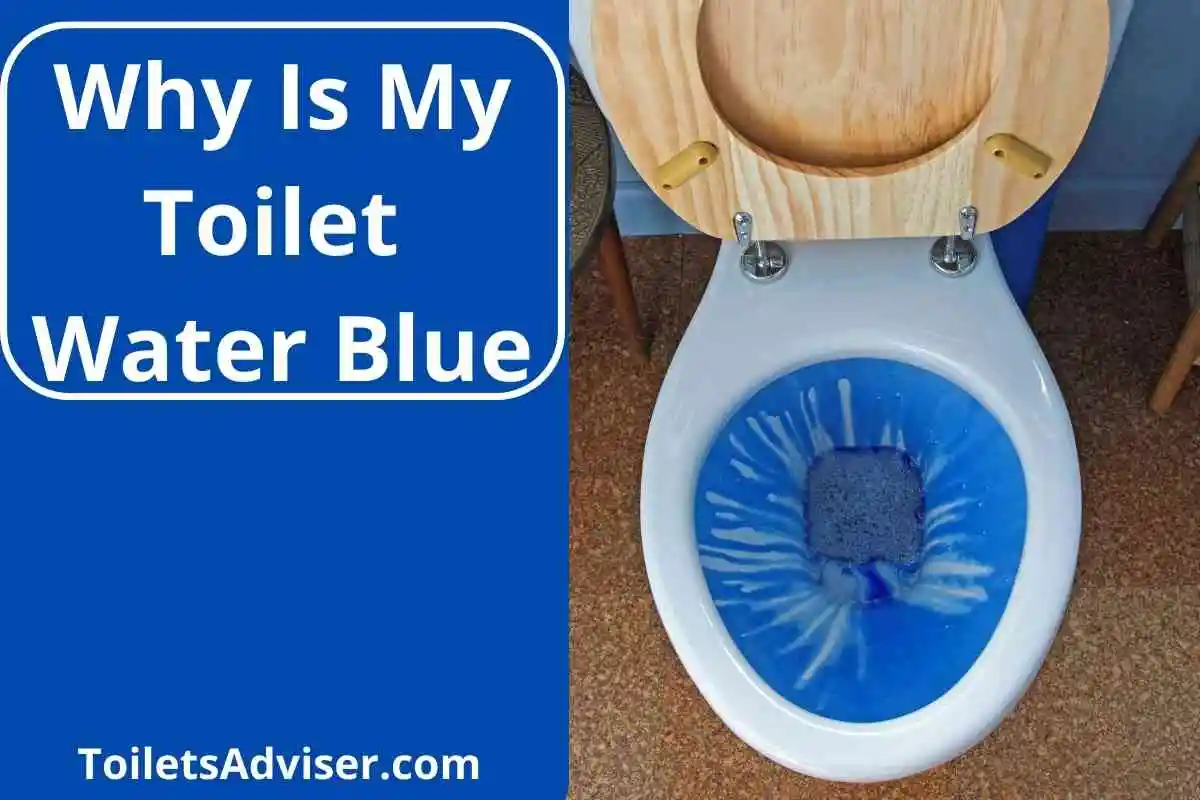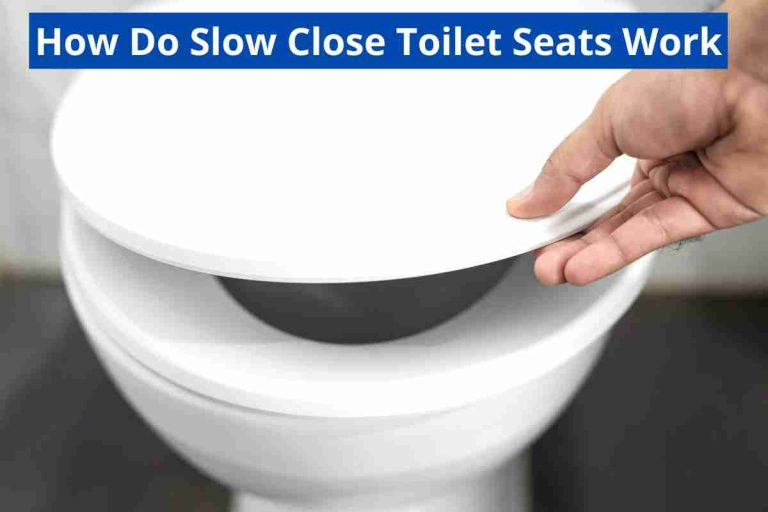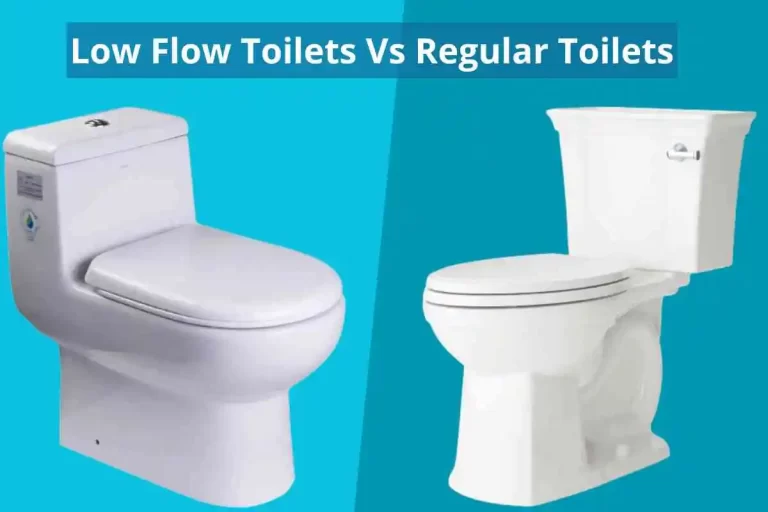Why Is My Toilet Water Blue(What Causes Make Blue Stain)2024

Blue is the color most toilet bowl cleaners take when combined with water. To see a dark blue color in the water, powdered cleaner is left in the water for a short period of time. A clean toilet is one with no visible stains.
If there is a high level of copper in your water, it may appear green or blue. It is common to find green or blue discoloration in the water of new-build homes or homes with recently installed copper pipes. Let’s discuss;
Table of Contents
Why is My Toilet Water Blue?
Humans are able to maintain a high level of hygiene and cleanliness but if we fail to care for these appliances properly, they can suffer from excessive use. It requires repair or replacement more frequently than they ought to.
To prevent this from happening, ensure that you check your toilet regularly to prevent problems from occurring instead of having to fix them.
There are three main factors to take into consideration when your toilet water begins to appear blue. Here’s a look at some of them to see if any of them are causing problems for your toilet.
Your copper pipes are corroded
The water in your toilet bowl can turn either green or blue when this happens. A change in color will occur in the water going to your toilet when Copper oxide is formed when copper oxidizes.
Copper oxide has a green/blue color and may wear off into the water. To save both your piping and toilet, you will need to address corrosion damage to pipes that are severe enough to cause such a problem.
Toilet cleaning with blue tablets
Toilets that are kept clean by using cleaning tablets behind the toilet are sometimes used by those who are meticulous about keeping their toilets clean. Among the chemicals in the tablets are those that prevent porcelain from staining and reduce the smell of toilet water.
Aside from preventing mold and limescale buildup, these tablets are also beneficial for preventing mold growth.
Your water supply contains an above-average amount of copper
Minnesota’s water naturally has a higher copper content. Water filtration systems can prevent this water from entering your home and also save you from its bad effects.
What Is The Best Way To Prevent Blue Toilet Water?
These steps are most frequently used to save your toilet from the blue water because blue water in the toilet is not easy to cure.
The use of water filters is recommended
Using filters can improve the water’s condition if your pipes are old and rusted. By filtering the water before it leaves the toilet tank, copper traces can be removed, thus eliminating the strange color.
It is possible to remove fluoride from water using activated carbon filters, chlorine filters, ion exchange filters or ion exchanges. In addition to removing copper from tap water, all of these filters also protect your water from other contaminants.
Make sure your home’s piping is up-to-date
Corroded drainage pipes are the actual cause of water discoloration. A plastic plumbing system must replace the existing plumbing system. A blue toilet water is a sign that your plumbing system is over 10 or 15 years old and has worn out copper pipes and fittings.
Getting information about the best options requires the assistance of a licensed plumber. It may also be a good idea to use high-quality plastic pipes since they neither corrode nor need much maintenance.
Everyone knows that replacing copper piping is a costly endeavor. To keep your plumbing system safe, we suggest using filters until you develop a detailed plan.
Frequently Asked Questions
Does blue toilet water need to be disposed of?
The isopropyl alcohol can be used in place of chlorine bleach in toilet cleaners without chlorine. There are no dye stains that can’t be removed with it. Put about 1/4 cup of it in the bowl and let it sit for 20 minutes before you scrub it.
What is the reason for the bright blue color of my toilet water?
The color of many toilet bowl cleaners changes when combined with water. A powdered cleaner is added to water and allowed to dissolve until it turns dark blue. There is no smell coming from the toilet which is an indication that it is as clean as possible.
What causes blue stains in hard water?
Your pipes begin to corrode when the pH level of your water is too low. Corrosion reduces the stability of your pipes and high mineral content well water may cause blue stains in sinks
Conclusion
Rusty copper piping in your home can cause blue water in your toilet. Use water filters or replace your pipes with plastic elements if you want to reduce the blue tint. A cleaning tablet can cause the problem sometimes and they clean your toilet without any problems but they also clog up your plumbing system.
{ "@context": "https://schema.org", "@type": "BlogPosting", "mainEntityOfPage": { "@type": "WebPage", "@id": "https://toiletsadviser.com/why-is-my-toilet-water-blue/" }, "headline": "Why Is My Toilet Water Blue(What Causes Make Blue Stain)2024", "description": "Blue is the color most toilet bowl cleaners take when combined with water. To see a dark blue color in the water, powdered cleaner is left in the water for a short period of time. A clean toilet is one with no visible stains. If there is a high level of copper in your water, it may appear green or blue. It is common to find green or blue discoloration in the water of new-build homes or homes with recently installed copper pipes.", "image": "https://toiletsadviser.com/wp-content/uploads/2023/02/Why-Is-My-Toilet-Water-Blue.webp", "author": { "@type": "Person", "name": "Alex Miller", "url": "https://toiletsadviser.com/" }, "publisher": { "@type": "Organization", "name": "Alex Miller", "logo": { "@type": "ImageObject", "url": "https://toiletsadviser.com/wp-content/uploads/2022/03/cropped-android-chrome-512x512-4.png" } }, "datePublished": "2023-02-04", "dateModified": "2023-04-28" } { "@context": "https://schema.org/", "@type": "BreadcrumbList", "itemListElement": [{ "@type": "ListItem", "position": 1, "name": "Home", "item": "https://toiletsadviser.com/" },{ "@type": "ListItem", "position": 2, "name": "Blog", "item": "https://toiletsadviser.com/blog/" },{ "@type": "ListItem", "position": 3, "name": "Why Is My Toilet Water Blue", "item": "https://toiletsadviser.com/why-is-my-toilet-water-blue/" }] } { "@context": "https://schema.org", "@type": "FAQPage", "mainEntity": [{ "@type": "Question", "name": "Does blue toilet water need to be disposed of?", "acceptedAnswer": { "@type": "Answer", "text": "The isopropyl alcohol can be used in place of chlorine bleach in toilet cleaners without chlorine. There are no dye stains that can’t be removed with it. Put about 1/4 cup of it in the bowl and let it sit for 20 minutes before you scrub it." } },{ "@type": "Question", "name": "What is the reason for the bright blue color of my toilet water?", "acceptedAnswer": { "@type": "Answer", "text": "The color of many toilet bowl cleaners changes when combined with water. A powdered cleaner is added to water and allowed to dissolve until it turns dark blue. There is no smell coming from the toilet which is an indication that it is as clean as possible." } },{ "@type": "Question", "name": "What causes blue stains in hard water?", "acceptedAnswer": { "@type": "Answer", "text": "Your pipes begin to corrode when the pH level of your water is too low. Corrosion reduces the stability of your pipes and high mineral content well water may cause blue stains in sinks" } }] }
Hello, I’m James Christopher, and I’ve spent the better part of the last decade immersed in the world of plumbing, specifically focusing on toilets and their intricacies. My journey into the world of plumbing was filled with twists, turns, and a healthy dose of curiosity.
I vividly recall my humble beginnings as an apprentice in a small plumbing firm. The first time I laid my hands on a wrench and peered into the depths of a toilet tank, I was awed and a little apprehensive. But that sense of curiosity drove me to learn more about these seemingly mundane fixtures.
Over the years, I’ve had the privilege of working on countless toilet installations and repairs. I’ve seen everything from the oldest, most stubborn toilets that seemed like relics from another era to the sleek, modern models with all their advanced features. Each toilet had its unique personality and set of quirks, and it was my job to decode their mysteries.
Toilets are not the most glamorous topic of conversation, but they are essential to our daily lives. We often take a well-functioning toilet for granted, but when things go awry, it can be a real headache. That’s where my expertise comes into play.
Through my years of hands-on experience, I’ve encountered many toilet problems, from the mundane to the downright perplexing. I’ve tackled insurmountable clogs, leaks that left homeowners scratching their heads, and flushing issues that defied logic. But I’ve learned something new with each challenge and honed my skills.
I’m excited to share my knowledge and insights with you through the blog https://toiletsadviser.com/. Whether you’re in the market for a new toilet and need guidance on choosing the right one, or you’re facing a frustrating toilet problem that needs fixing, I’m here to help.
At toiletsadviser, I’ll draw from real-world experiences to provide practical advice and solutions. I’ll demystify the world of toilets, making it easier for you to understand how they work and how to keep them in tip-top shape. I’ve covered you, from reviews of the latest toilet models to step-by-step troubleshooting guides.





